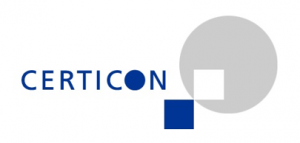The path to agility: a staged approach
10.04.2018Company: McKinsey & Company, Inc. Prague
Peter Drucker pinpointed five essential questions to ask about any organization. He recognized that the answers provide a stepping stone for probing deeper to truly understand an organization.
The importance of questioning holds true on the journey to become Agile, which involves four distinct stages: agile foundations, experimentation, scale-up and continuous evolution.
McKinsey’s work with dozens of organizations making that journey has identified several key questions to be answered in the first three stages to promote the five trademarks of such nimble organizations.
Here are the essential questions for assessing each of the stages before the final “continuous evolution” phase:
Stage One: Assessing agile foundations
- Is the organization’s purpose and strategy clear to all employees?
- Are there standard ways of working for all critical activities?
- Are roles, responsibilities, and decision rights clear across the organization?
- Is governance and decision-making quick, clear, and effective?
- Are leaders aligned on why the transformation is needed and on a blueprint for the Agile end-state that can deliver the desired business objectives?
- Do leaders, particularly senior leaders, possess the skills and, particularly, the mindsets to design, build, and lead an agile organization?
If you answered “no” to any of those questions, you have some foundational agility work to do in parallel with launching agile experimentation. Addressing those fundamental elements will help create stability needed to execute successfully.
Stage Two: Agile Experimentation
- Is there leadership alignment on the desired outcome of the experiments/pilots?
- Have one or more experiments/pilots been short-listed and selected and are they sufficiently self-contained and able to deliver the desired outcome?
- Has sufficient awareness, understanding, and secured leadership buy-in been established in areas impacted by the experiments/pilot?
If you answered ‘no’ to any of these questions, you have more work to do before launching experiments/pilots. If yes, you are ready to move to scale-up. (Note: experiments/ pilots may still be going on in parallel to scale-up efforts.)
Stage Three: Scale-Up
Once your experiments/pilots are ongoing and you want to gauge readiness for scale-up, consider these questions:
- Have we successfully completed a major agility pilot or several smaller pilots that demonstrated the desired outcomes?
- Do we have a high-level plan for getting from current state to end-state that the organization believes is feasible?
- Have we built broad-based leadership buy-in for the full agile transformation?
During scale-up, continually ask these questions:
- Have we driven sufficient changes to achieve the desired business objectives?
- Are we a fully agile organization from both an operating model and a mind-sets and behavior perspective?
If the answers were yes, you have reached the new normal and can focus on the next stage.
Stage Four: Continuous Evolution
To stay agile, you must maintain the dynamism of the earlier stages as you continually refine the operating model to meet changing requirements. This requires new questions – but we will leave those to a future blog post.
by Wouter Aghina, Karin Ahlbäck and Allan Jaenicke
Tags: Law | Human Resources | Education |







